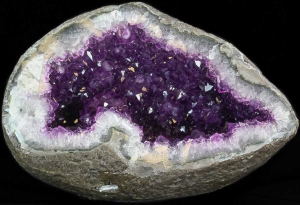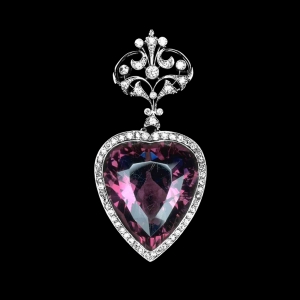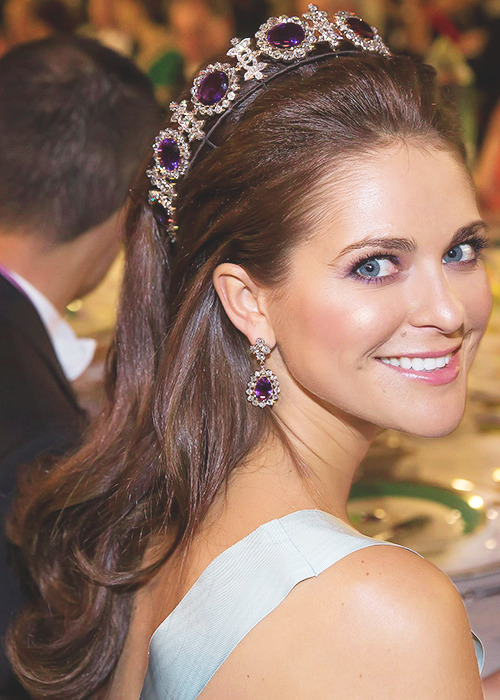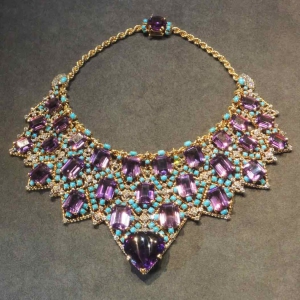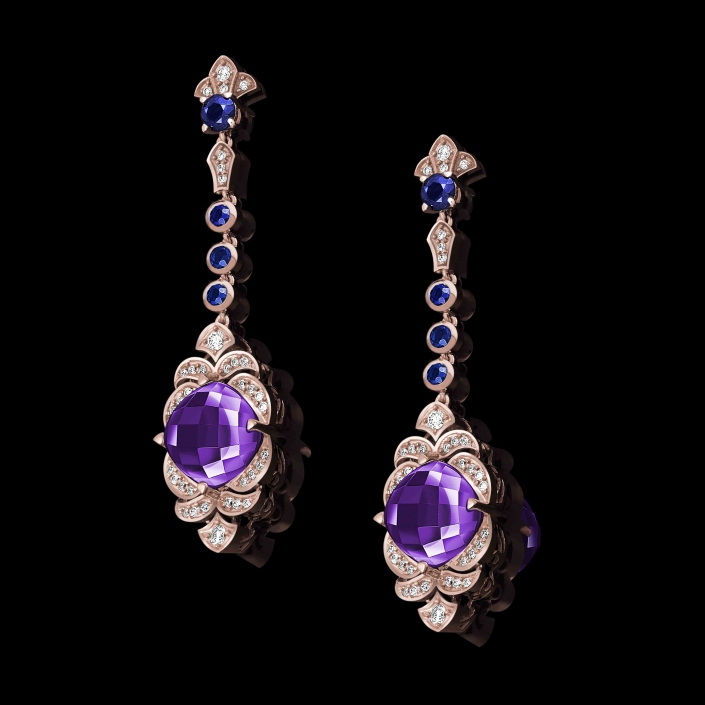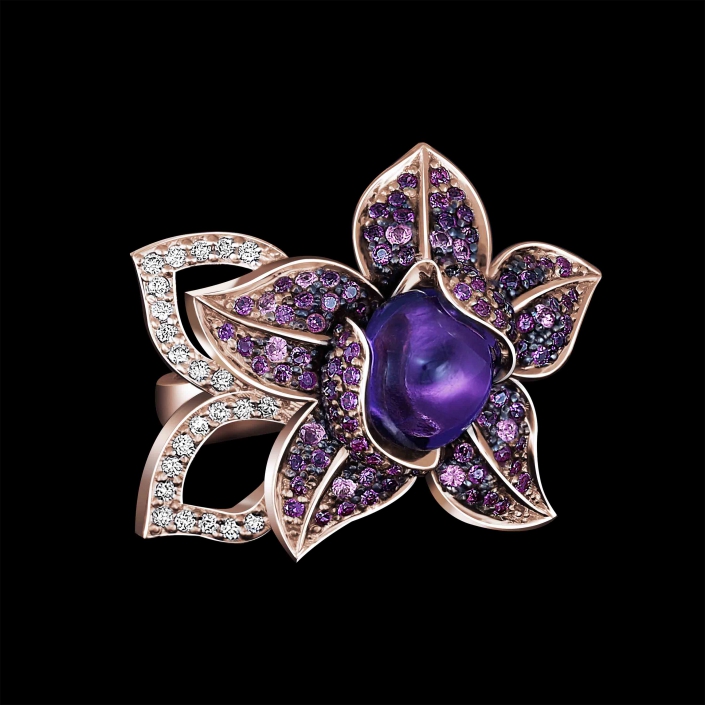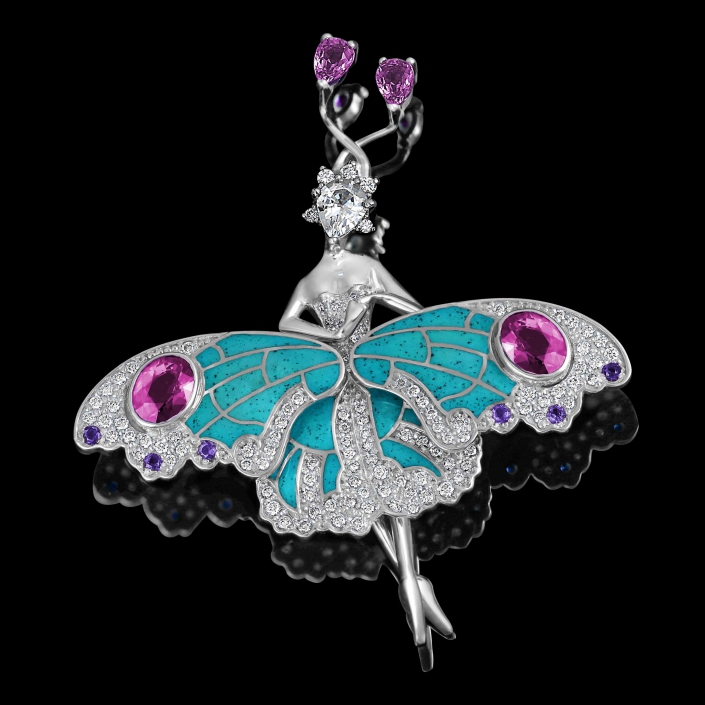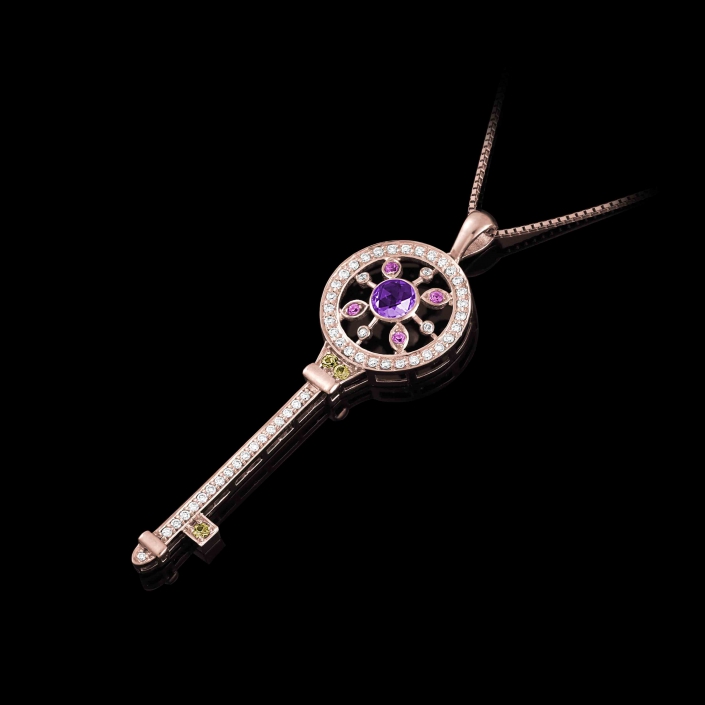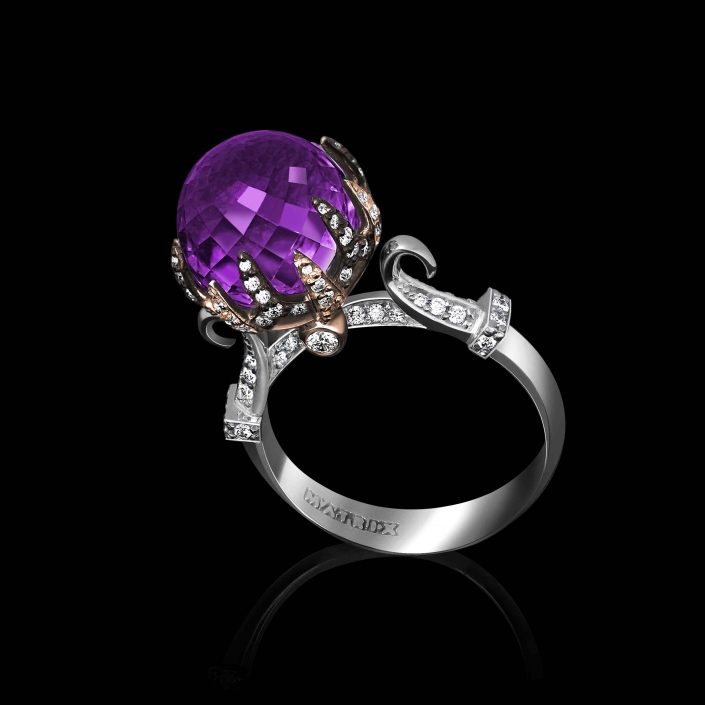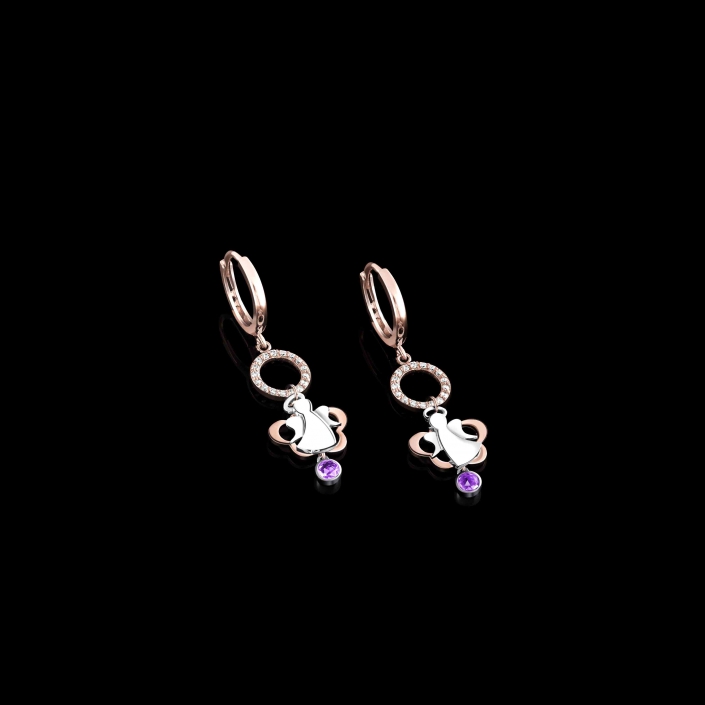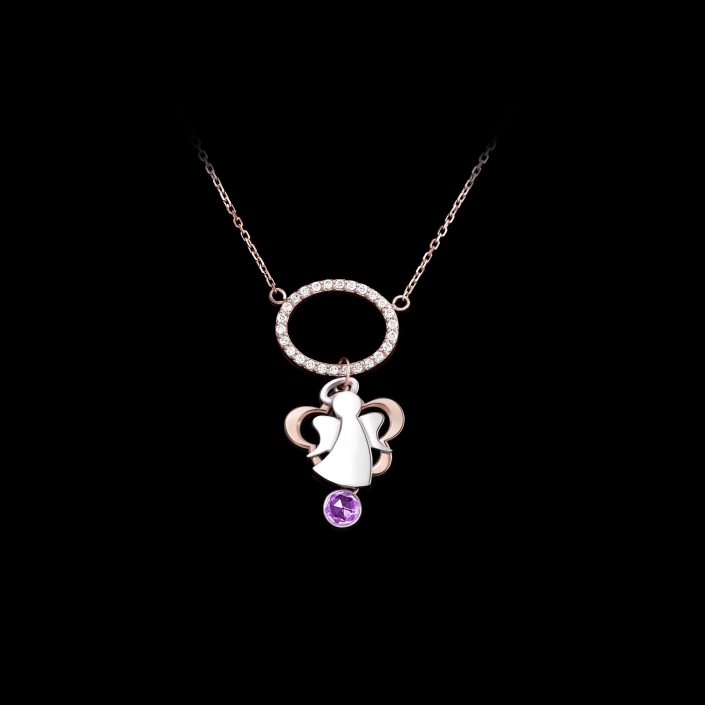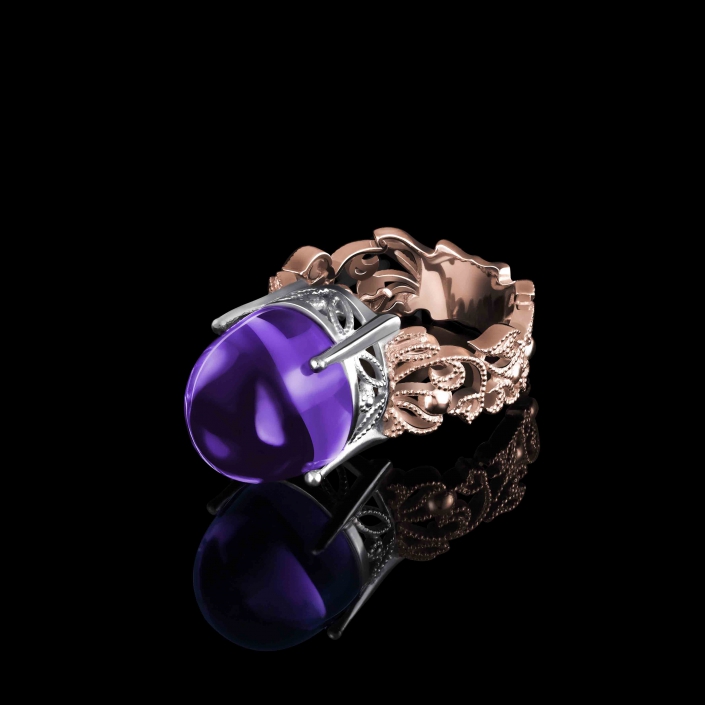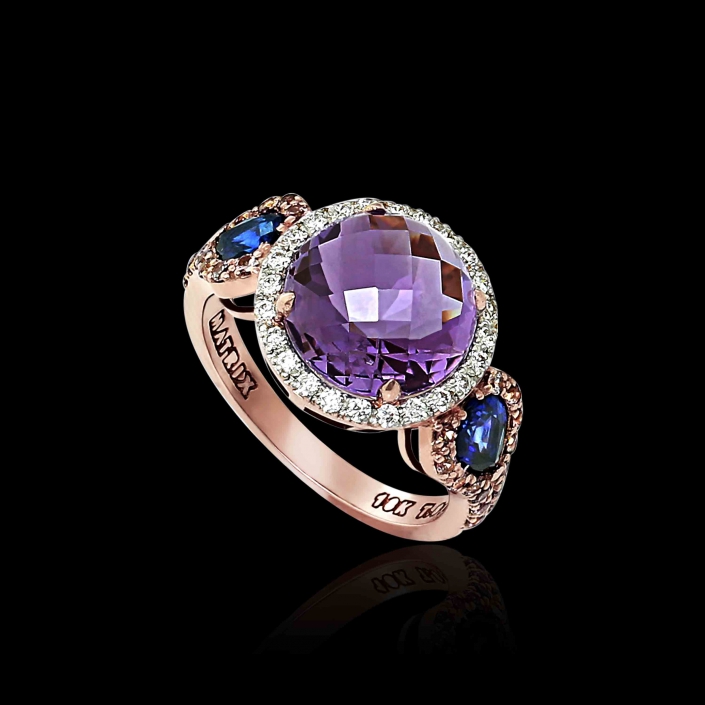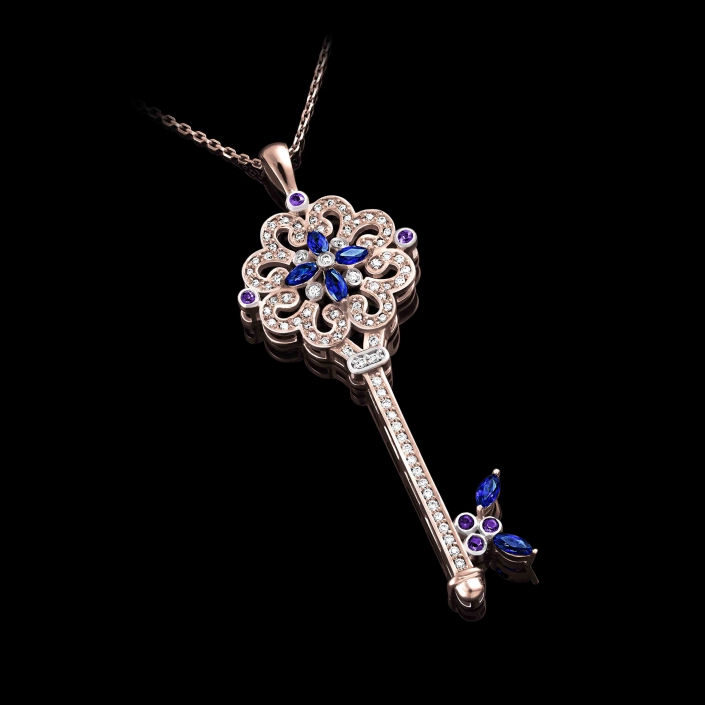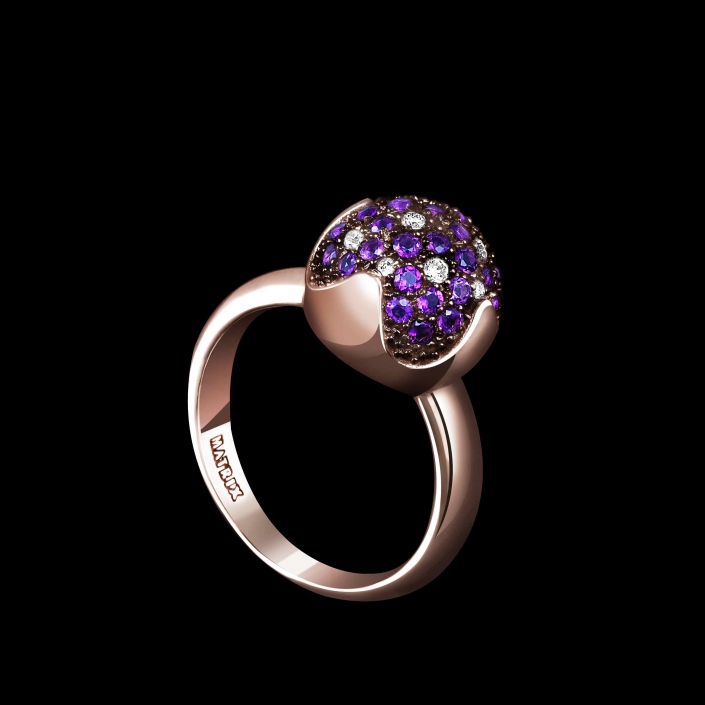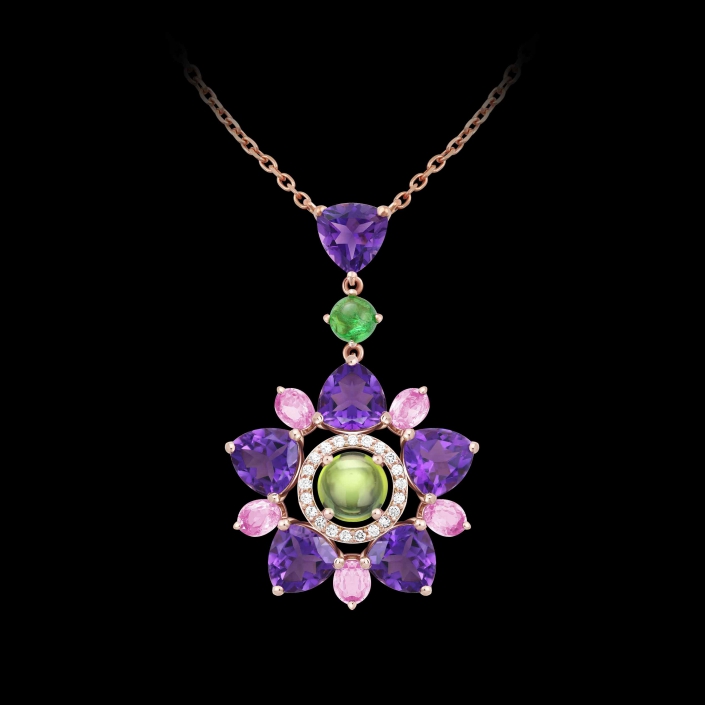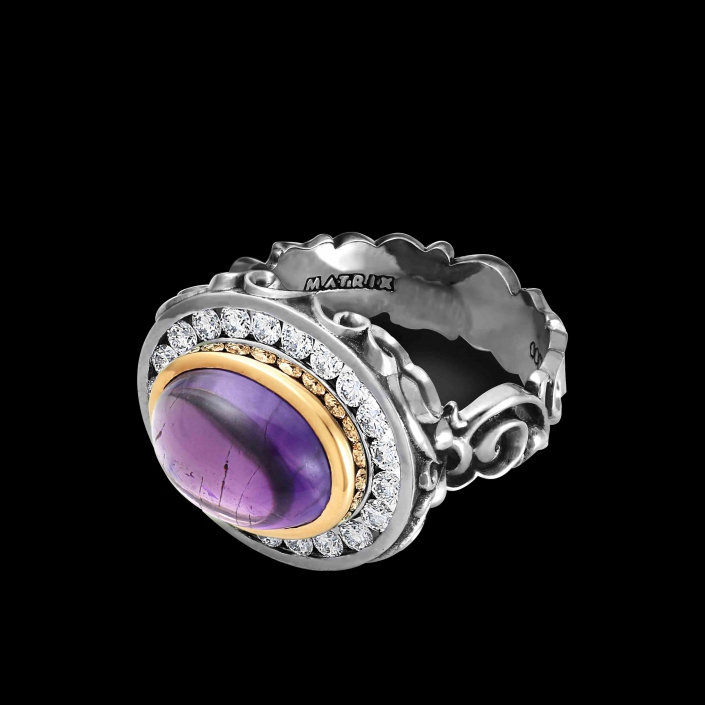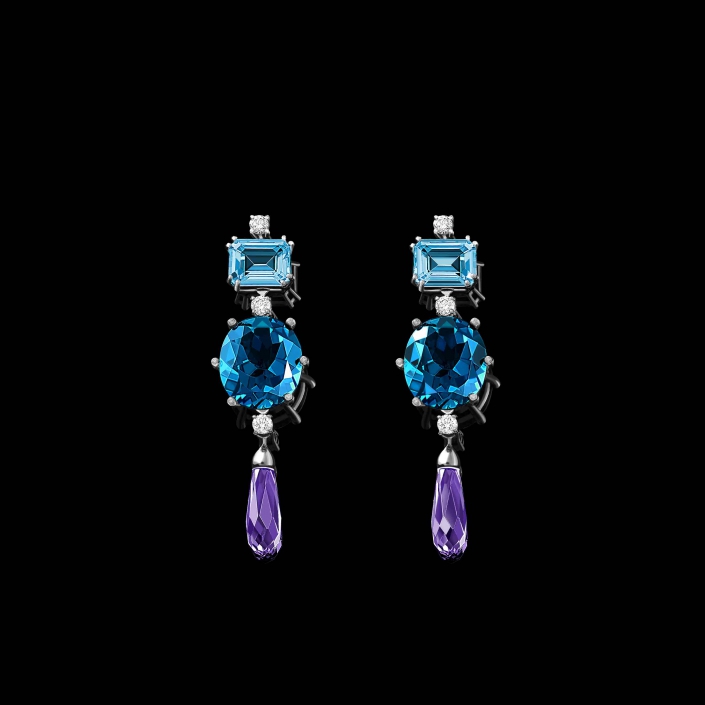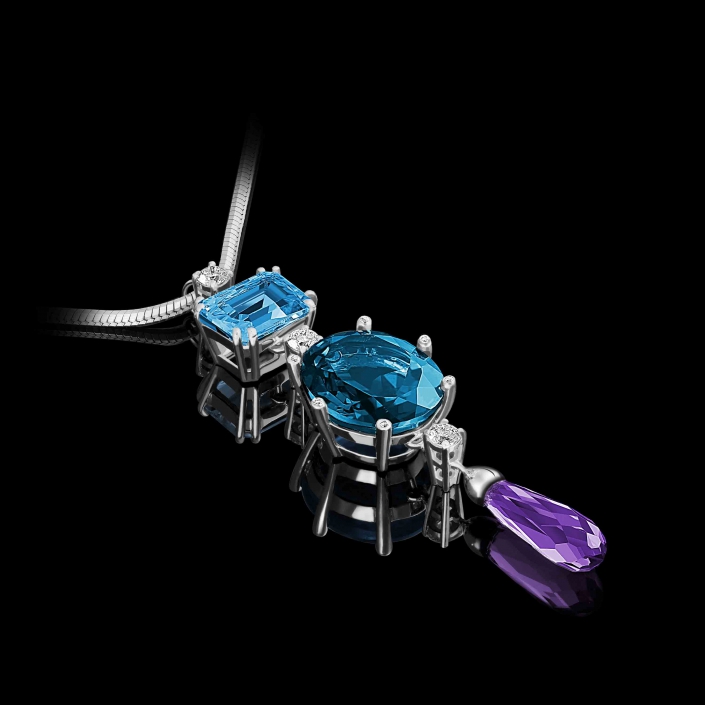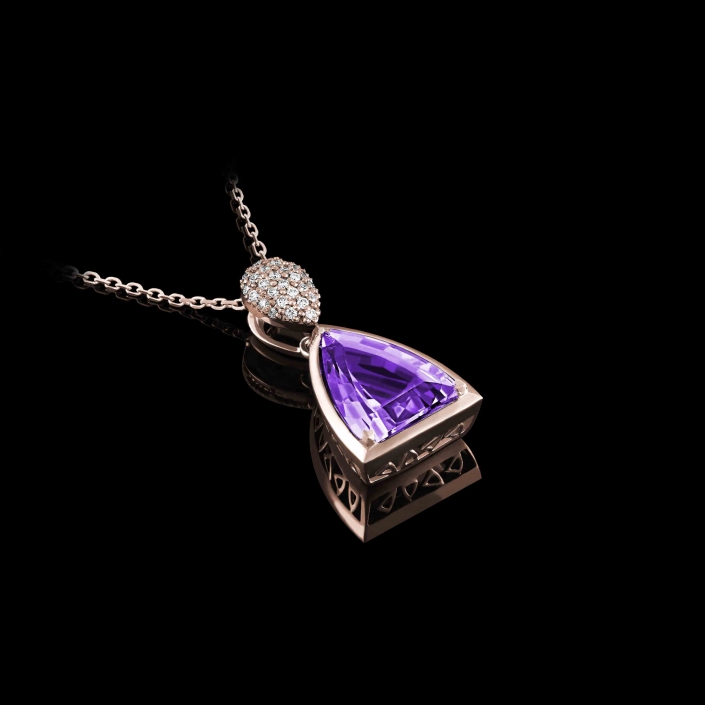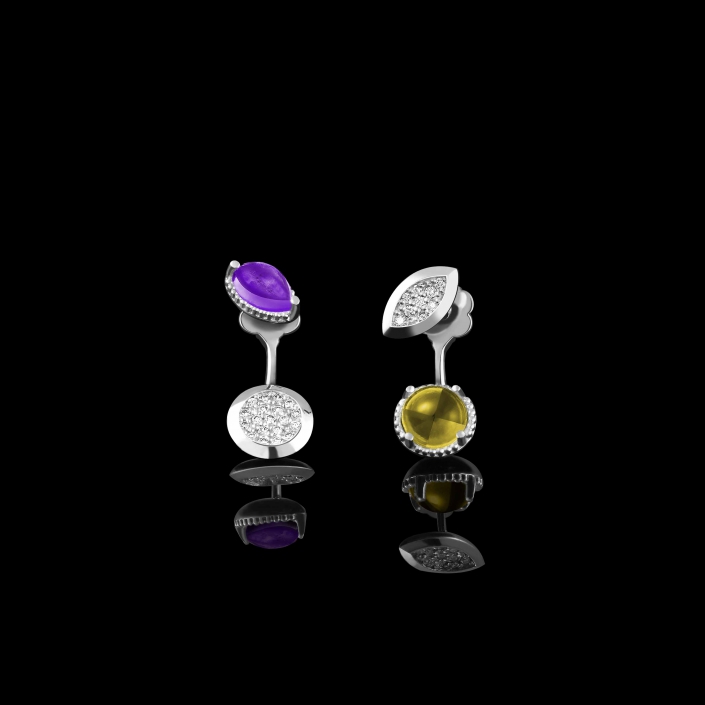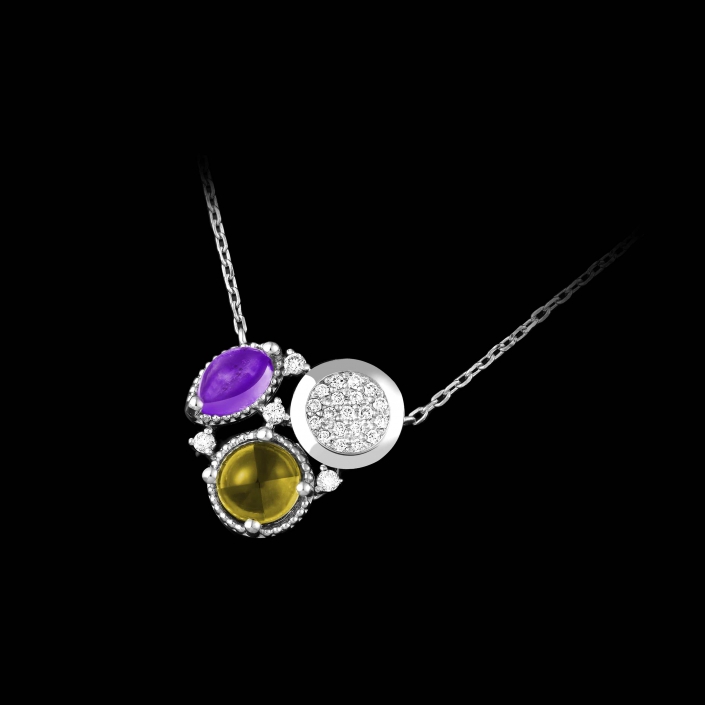Amethyst
Amethyst is a violet variety of quartz.
The name comes from the Koine Greek ἀμέθυστος amethystos from ἀ- a-, “not” and μεθύσκω methysko / μεθύω methyo, “intoxicate”, a reference to the belief that the stone protected its owner from drunkenness. The ancient Greeks wore amethyst and carved drinking vessels from it in the belief that it would prevent intoxication.
Amethyst is a semiprecious stone often used in jewelry and is the traditional birthstone for February.
Amethyst was used as a gemstone by the ancient Egyptians and was largely employed in antiquity for intaglio engraved gems
The Greeks believed amethyst gems could prevent intoxication, while medieval European soldiers wore amethyst amulets as protection in battle in the belief that amethysts heal people and keep them cool-headed Beads of amethyst were found in Anglo-Saxon graves in England
Famous Amethysts
An Egyptian Amethyst necklace featuring an 8th century BC. inscription.
The use of amethyst in Egypt dates back as far back as 3100 B.C. The Egyptians primary source for their supply of amethyst came from Nubia, once a province of ancient Egypt. It was a favorite of Egyptian Pharoahs, most often used for personal adornment.
The Morris Amethyst Brooch, set with a 96-carat heart shaped amethyst, is in the collection of the Smithsonian Institution, National Museum of Natural History. The amethyst is probably from Brazil and exhibits a deep rich purple color. This piece was most likely made during the Edwardian period (1901-1915) when jewelry featured lacy filigree designs that were light and delicate as the clothing at the time, with a sense of refined elegance and luxury. Amethyst, a favorite stone of King Edward VII’s wife, Alexandra, was often included in jewelry of the era.
Queen Silvia of Sweden’s tiara is set with amethysts that were originally owned by the French Empress Josephine. The tiara actually didn’t start out as a tiara at all; in fact, it’s only been a tiara for a few decades. Instead, the piece was originally a necklace made of diamonds surrounding fifteen large amethysts.
The Duchess of Windsor amethyst and turquoise necklace was created by Cartier for Wallis Simpson, the Duchess of Windsor, in 1947.


